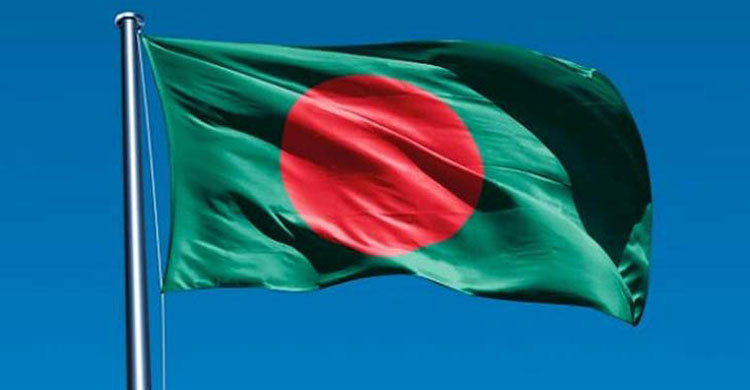The national anthem carries much more significance than just its melody and lyrics. It symbolizes the history, culture, and values of a nation. In recent decades, several countries have taken bold steps to amend their national anthems to better reflect contemporary values and national inclusivity. In Bangladesh, discussions about changing the national anthem have recently intensified.
The movement that began in mid-July demanding reforms in government job quotas evolved into a movement for the government’s ousting within a week. As a result, then-Prime Minister Sheikh Hasina fled to India seeking asylum on August 5. After the fall of the autocratic government, unprecedented revelations of murder, abductions, and theft of state assets emerged. On August 8, an interim government led by Nobel laureate Dr. Muhammad Yunus took office on the recommendation of student and public movements. At this time, demands for reforms and repairs of the state apparatus from various sectors of society, including students at the forefront of the movement, grew stronger.
Building on the legacy of the 1971 Liberation War, demands for constitutional amendments emerged. Discussions began to ensure that political parties do not revert to autocratic rule once in power. Concurrently, the issue of changing the national anthem came up. Recently, former Brigadier General Abdullahil Aman Azmi demanded changes to both the constitution and the national anthem at a press conference. This issue gained prominence following his remarks.
On social media, netizens have expressed that during state reforms, everyone’s advice and demands should be considered. Abdullahil Aman Azmi proposed a discussion on whether to accept or reject his suggestion. Another faction argues that the national anthem is a matter of national sentiment, questioning on what basis he is calling for a change. In a virtual press conference at the National Press Club, Abdullahil Aman Azmi, son of the former Amir of Jamaat-e-Islami Professor Golam Azam, stated that Bangladesh’s national anthem is “contrary to the existence of independence.” He argued that the anthem “Amar Sonar Bangla” (My Golden Bengal), written by Rabindranath Tagore to protest the 1905 Bengal partition, was meant to unify Bengal. He questioned whether Bangladesh wants to remain independent or become a part of India’s West Bengal.
Not only Abdullahil Aman Azmi but rising artist Mainul Ahsan Nobel also drew controversy by commenting on the national anthem while expressing his affection for a song. Nobel stated that the song “Bangladesh,” written by Prince Mahmud, is more emotional and representative of Bangladesh than Tagore’s national anthem. Despite calling it a personal comment, Nobel faced a nationwide backlash. Indian Bengali speakers also criticized him, demanding an apology from him to the nation. While this controversy swirled around Nobel, others pointed out that his comment was just one instance, and there have been several past attempts to change the national anthem.
Politically, proposals were made to replace “Amar Sonar Bangla” with other songs. Political analysts assert that the first initiative to change the national anthem was taken by the government of Khondkar Moshtaque Ahmed, involved in the assassination of the nation’s father, Sheikh Mujibur Rahman. After the assassination on August 15, 1975, Moshtaque Ahmed assumed the presidency and formed a high-level committee to change the national anthem. The committee, chaired by Dr. Deen Muhammad from the Department of Bengali at Dhaka University, was tasked with proposing a new anthem within a month.
Historians and political analysts state that the Deen Muhammad committee held three meetings and submitted a report proposing two songs: “Chol Chol Chol” by national poet Kazi Nazrul Islam and “Panjeri” by Faruque Ahmed. However, due to subsequent coups, the proposal was shelved. A second attempt to change the anthem occurred on April 30, 1979, with a proposal to replace “Amar Sonar Bangla” with the song “Prothom Bangladesh, Amar Shesh Bangladesh” (First Bangladesh, My Last Bangladesh). During this time, under Ziaur Rahman’s government, a secret letter from Prime Minister Shah Azizur Rahman argued that Rabindranath Tagore’s song, being the national anthem of India, was inappropriate for Bangladesh and proposed “Prothom Bangladesh, Amar Shesh Bangladesh” as the new anthem. Following this, the Cabinet Division issued instructions for the new song to be played at state events. However, after Ziaur Rahman’s death in 1981, the initiative was halted.
The third attempt to change the national anthem occurred during the BNP-Jamaat coalition government from 2001 to 2006. On March 19, 2002, then-Minister of Industries Matiur Rahman Nizami and Minister of Social Welfare Ali Ahsan Mujahid submitted a joint recommendation to the Prime Minister, arguing that the anthem needed revision in line with Islamic values and contemporary times. Prime Minister Khaleda Zia forwarded the request to the Ministry of Culture. The minister, Khurshid Jahan Haque, deemed the issue highly important and forwarded it to the Secretary. The Secretary considered the national anthem change beyond the Ministry’s jurisdiction and referred it to the Cabinet Division. The proposal was sent to the Ministry of Culture on August 19 of the same year but was not adopted during that government’s tenure. No further action was noted in the documents thereafter.
It is worth noting that there is no law that deems the national anthem immutable. Examples of national anthems being changed in various countries exist. Nepal’s national anthem was changed in 2006. Germany altered some lines in its anthem to remove elements encouraging nationalism. South Africa changed its anthem in 1997 after the end of apartheid. Iraq briefly adopted a new anthem in 2004 following Saddam Hussein’s fall and is still searching for a new anthem. Afghanistan’s national anthem has been changed several times. Australia changed its anthem on January 1, 2021, to reflect the long history and heritage of its Indigenous peoples, removing the phrase “young and free.”



